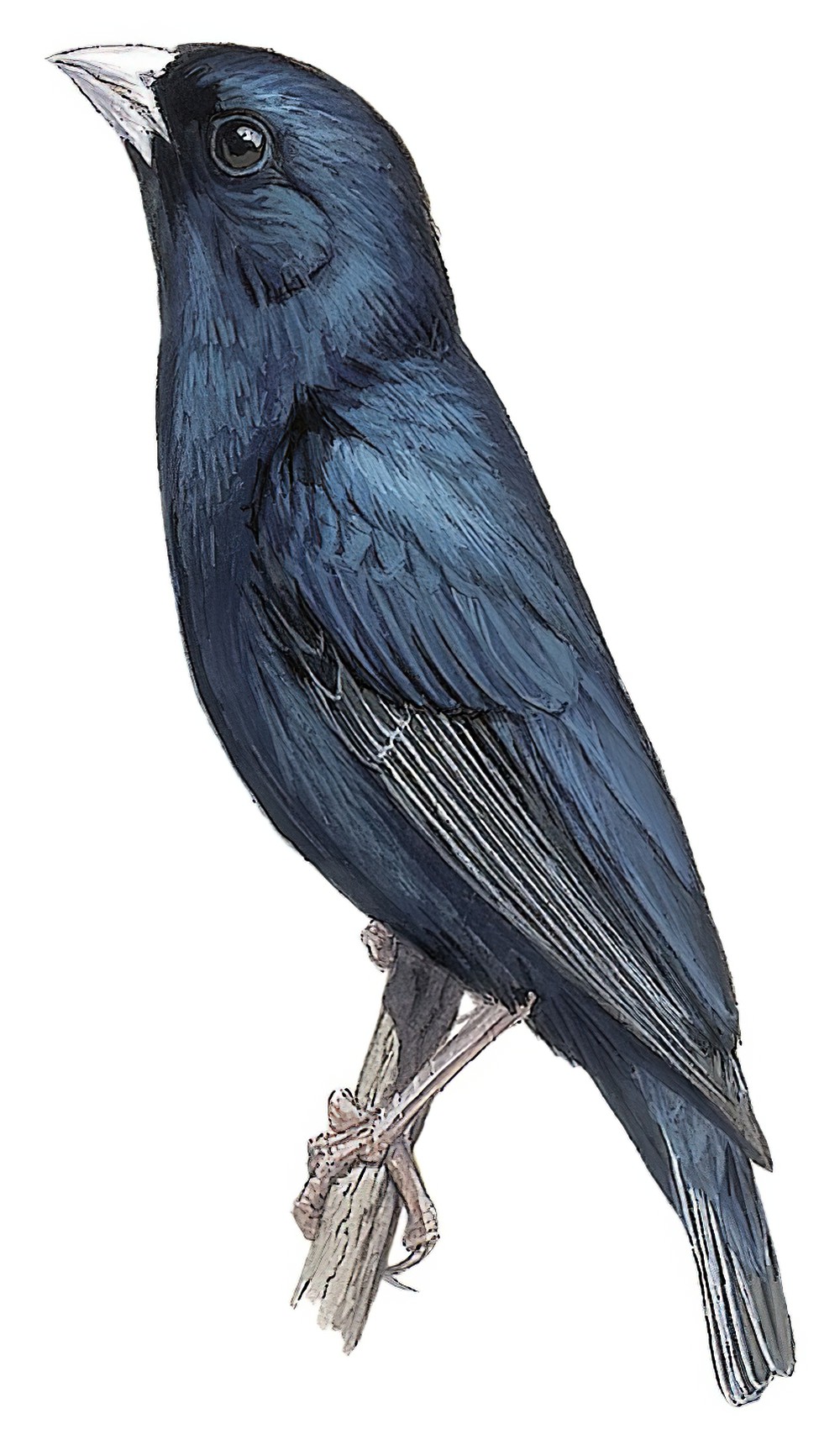Jambandu Indigobird / Vidua raricola

Jambandu Indigobird
SCI Name:
Protonym: Vidua raricola Misc.Pub.Mus.Zool.U.Michigan no.162 p.16
Taxonomy: Passeriformes / Viduidae / Vidua
Taxonomy Code: jamind1
Type Locality:
Author: Payne
Publish Year: 1982
IUCN Status: Least Concern
DEFINITIONS
VIDUA
(Viduidae; † Pin-tailed Whydah V. macroura) L. vidua widow < viduus bereaved, widowed (see vidua); "LES VEUVES. (VIDUA. Cuv.) Sont des oiseaux d'Afrique et des Indes, à bec de linotte, quelquefois un peu plus renflé à sa base, qui se distinguent parce que quelques unes des couvertures supérieures de leur queue sont excessivement allongées dans les mâles (1). ... (1) On ne sait pourquoi Linnæus et Gmelin les ont associés aux bruans, sous les noms de emberiza regia (enl. 8, 1) — Emb. serena (ib. 2.) — Emb. paradisea (enl. 194.) — Emb. panayensis (enl. 647.) — Emb. longicauda (enl. 635.) Si on ne laisse pas les veuves avec les linottes, on ne peut les placer qu'avec les gros becs. N. B. L'emb. principalis (Edw. 270) et l'emb. vidua (Aldrow. Ornit. II, 565) me paraissent le même oiseau en différens états de plumage. L'emb. psittacea, Seb. I, pl. 66, fig. 5, n'est pas bien authentique. L'angolensis, Salern. Orn. 277; la veuve chrysoptère, Vieill. Ois. ch. pl. 41, et le lox. macroura, enl. 183, 1, qui n'en diffère peut-être pas, ne sont point des veuves, mais des gros becs ordinaires." (Cuvier 1817); "Vidua Cuvier, 1817, Règne Animal, 1, p. 388. Type, by tautonymy, Emberiza vidua Linnaeus = Fringilla macroura Pallas." (Traylor in Peters, 1968, XIV, p. 394).
Synon. Hypochera, Linura, Steganura, Tetraenura, Videstrelda, Widha.
• (Viduidae; syn. Vidua † Long-tailed Paradise Whydah V. paradisaea) "Vidua, Cuvier. (fig. 246.) Bill short. Wings lengthened; the second, third, and two following quills longest, and of equal length. Tail boat-shaped: males with the two middle feathers excessively elongated, generally broad and convex. V. rufitorques. W. Af. i. 174.(c) erythrorhynchus. Ib. (b) chrysonotus. W. Af. i. 174.(d) paradisea. Ib. pl. 11." (Swainson 1837); "Vidua "Cuvier" Swainson, 1837, Nat. Hist. Classification Birds, II, p. 278 (not of Cuvier, 1817). Type, by subsequent designation (G. Gray, 1855, Cat. Genera Subgenera Birds Brit. Mus., p. 71), Emberiza paradisaea Linnaeus, 1758." (JAJ 2021).
vidua
L. vidua widow < viduus bereaved, widowed (e.g. in mourning, black, veiled).
● ex “Aguimp” or “Lavandière Pie” of Levaillant 1805, pl. 178 (subsp. Motacilla aguimp).
● ex “Petite Veuve” and “Grande Veuve” of Brisson 1760; “is called la Veuve, or Widow Bird, from the colour ... Edwards gives another reason for the name - being a corruption of Whidah, a fort in Africa, in the neighbourhood of which they are common. Whidah Bird, and Widow Bird, are sounds very similar” (Latham 1783). Whydah or Whidah (now Ouidha, Benin), received its European name by a corruption of São João Baptista de Ajudá, a nearby Portuguese fort (syn. Vidua macroura).
● "Unfortunately Mons. Robert sent only one female of this distinct species. Of the allied H. griseiventris also the male is as yet unknown" (Hellmayr 1905) (Willisornis).
raricola
Specific name Habropyga rara Antinori, 1864; L. -cola dweller < colere to inhabit; “The species name raricola refers to the affinity of this brood parasitic species for its foster species and song model, the Black-bellied Firefinch Lagonosticta rara” (Payne 1982) (Vidua).
UPPERCASE: current genus
Uppercase first letter: generic synonym
● and ● See: generic homonyms
lowercase: species and subspecies
●: early names, variants, mispellings
‡: extinct
†: type species
Gr.: ancient Greek
L.: Latin
<: derived from
syn: synonym of
/: separates historical and modern geographic names
ex: based on
TL: type locality
OD: original diagnosis (genus) or original description (species)












